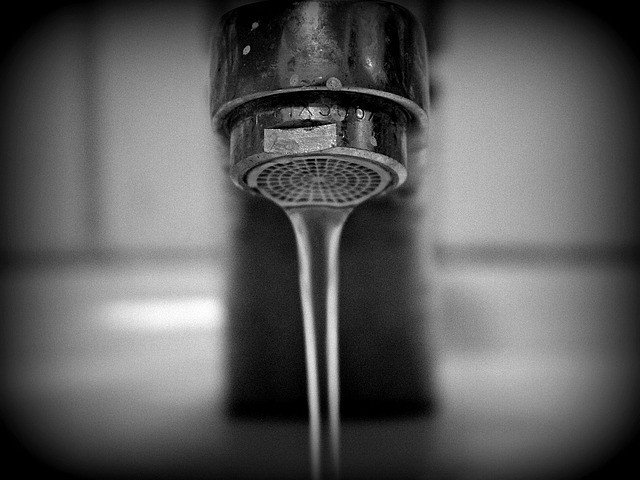Can Frozen Pipes Really Be Prevented by One Dripping Faucet?
How much of a cost is caused by a single leaky faucet? How much does it save you if it prevents the water pipes in your house from breaking as the temperature drops? According to the Insurance Information Institute, one of the most prevalent types of property damage that may occur during a period of freezing temperatures is burst pipes.
The average claim made by a homeowner for this kind of damage is more than $10,000. According to a survey by Philadelphia Insurance Companies, the expense of a water leak caused by frozen pipes is much greater for company owners.
Claims for businesses typically amount to around $27,000, but they may sometimes go into the millions of dollars.
But is it possible that a single leaky faucet may rescue the day? Providing that it’s the correct option. It is important to position the dripping faucet so that it is as far as possible from the water source in order to ensure that water flows through the whole of the system.
Putting any faucet in a drip mode can be helpful if you are unsure about the location of the source of the incoming water supply. There is a widespread belief that the water would not freeze if it drips slowly because it will remain in motion as it travels through the pipes. This is not the case.
Despite the fact that this helps, the fact of the matter is that water may freeze even while it is flowing if the temperature is low enough. The real reason a dripping faucet can help prevent pipes from bursting is that the constant drip relieves pressure that is building up in the pipes between the ice blockage and the faucet, which helps to prevent them from bursting when the pipes begin to thaw.
This is because the pressure is building up in the pipes between the ice blockage and the faucet.
Pipe junctions are particularly susceptible to damage, but water, which grows in volume as it freezes, may put strain on metal or plastic pipes virtually everywhere they are located.
The pipes sustain damage as a result of the freeze, but the damage doesn’t become apparent until after they have thawed. It is possible for pipes to leak or even explode as a result of the combined pressure of the growing and shrinking ice blockage as well as the increased water pressure behind it.
If a pipe is entirely frozen, you should always keep a faucet on, even if there is not enough water flow for a drip, as this will prevent the water from expanding and breaking the pipe. When the ice melts, the water will need somewhere to go in order to release the pressure that has been building up.
If the temperature during a cold spell is expected to remain at or below 20 degrees Fahrenheit (-6 degrees Celsius), you should allow at least one of your faucets to drip. Because the temperatures in attics, garages, basements, and crawl spaces are often similar to those found outside,
it is important to pay particular attention to any water pipes that are located in these unheated interior locations. In a similar fashion, you need to pay attention to the pipes that are located along the outer walls of the building and ensure that they have adequate insulation.
If a sink’s base cabinet houses the faucet, you should leave the cabinet doors open so that the warmer air from inside the house can reach the pipes. This applies to both the kitchen and the bathroom. This is of utmost significance in the event that the sinks are positioned along an outside wall.
In the event that a pipe in your house bursts or starts leaking, it is in your best interest to be familiar with the location of the main shut-off valve. However, it is possible that this primary shut-off valve is positioned close to the external water meter rather than where it is normally found, which is where the main water line enters the home.
If you are aware of how to immediately switch off this water supply, you might reduce a major flooding calamity into a little nuisance, and in the process, you may save yourself some money.
That Is Absolutely Fascinating
Before you leave your home during the winter months to get away from the chill, be sure that the water main has been turned off and that the faucets have been closed.
Frozen Pipe FAQ
Do pipes that have been frozen usually burst?
After being frozen, pipes do not always break open on their own. This phenomenon is typical throughout the winter months, but pipes only break when there is genuine damage inside of them or when the water thaws after having been frozen for a longer length of time. The first scenario is more likely.
Do dripping faucets help unfreeze pipes?
Even while it’s recommended to keep a faucet flowing in order to keep pipes from freezing, water may still freeze even when it’s running, and this is particularly true for water that’s going slowly.
Does homeowner’s insurance cover burst pipes caused by freezing pipes?
The vast majority of insurance companies do not cover the expenses associated with the repair of broken pipes. However, they are often responsible for paying for any water damage that results from it. If you have concerns about this, you should talk to your service provider.
What temperature do pipes freeze at?
When the temperature outside a residence falls below 20 degrees Fahrenheit, the pipes in a plumbing system will begin to freeze. This may be dangerous. If it gets any colder than this, there is a possibility that moving water may freeze.
How do you locate a water pipe that has frozen over?
If you know the location of the facets that aren’t functioning, you may use that information to pinpoint the principal offender or the primary frozen pipe. If none of the faucets are operating, the frozen pipe is most likely located somewhere close to the main line.
6 Unexpected Exclusions From Homeowners Insurance




